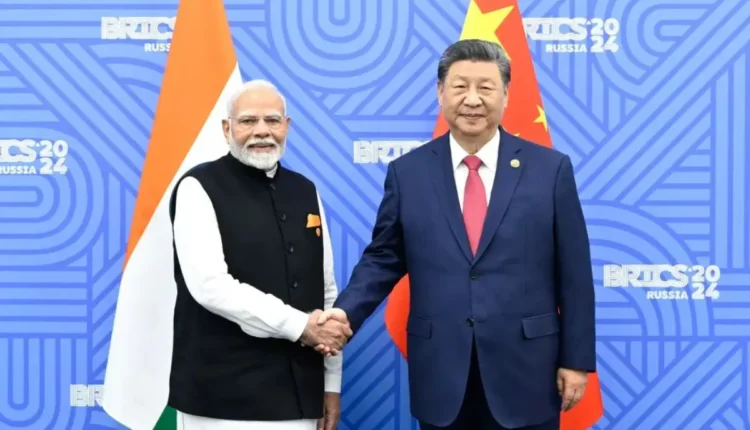India-China: After Four Years of Icy Relations, Ties Begin to Warm
India-China Thaw: Rekindling Relations After the 2020 Ladakh Clash
After years of tension stemming from the bloody border clash in Ladakh in June 2020, which marked the deadliest conflict between India and China since their 1962 war, relations between the two nuclear-armed neighbors are beginning to thaw. This delicate but promising development was catalyzed by a recent border deal aimed at resolving military standoffs and restoring pre-crisis positions in the Ladakh region.
The Turning Point: Border Deal and High-Level Diplomacy
The landmark agreement, signed last month, paved the way for a historic meeting on October 23 between Indian Prime Minister Narendra Modi and Chinese President Xi Jinping. This meeting, held on the sidelines of a BRICS summit in Russia, marked the first direct talks between the leaders since the 2020 clash. Both sides pledged to strengthen communication and cooperation, signaling a mutual desire to move forward.
The deal has also met New Delhi’s long-standing precondition for easing tensions: troop disengagement and the restoration of calm along the disputed frontier. By addressing these immediate concerns, the agreement sets a foundation for further dialogue and collaboration.
India-China: Economic Cooperation Amid Political Tensions
Despite years of frosty relations, India and China have maintained robust trade ties. In fact, China was India’s top trading partner last year, underscoring the resilience of their economic partnership. The recent thaw could unlock even greater potential for Chinese foreign direct investment (FDI) in India, particularly in high-growth industries such as technology and manufacturing. For Beijing, greater economic engagement with India offers a pathway to reinvigorate its slowing economy by tapping into the world’s fastest-growing major market.
India’s Chief Economic Advisor has emphasized the importance of fostering Chinese investment to accelerate economic growth. Meanwhile, Chinese firms view India as a lucrative destination for expanding their global footprint.
Challenges Ahead: Deep-Seated Mistrust
However, the significance of the India-China thaw must be tempered by realism. The border deal, while promising, does not resolve the broader dispute over their 2,100-mile frontier, with 50,000 square miles still in contention. Memories of the violent Ladakh clash—where iron rods and icy rivers turned into weapons of death—remain fresh, fostering mistrust among border troops.
Additionally, broader geopolitical tensions persist. India’s rejection of China’s Belt and Road Initiative, due to its encroachment on Indian-claimed territory, continues to be a flashpoint. Beijing’s growing naval presence in the Indian Ocean and its support for Pakistan’s military infrastructure only compound New Delhi’s security concerns.
Geopolitical Implications: A Balancing Act
A lasting détente between India and China could have significant ramifications for global geopolitics. Improved relations might temper India’s strategic partnership with the United States, which has been bolstered by shared concerns over China’s rise. Washington has invested heavily in defense cooperation with New Delhi, supplying critical intelligence and advanced military equipment to counter Chinese provocations.
Meanwhile, China’s deep ties with Pakistan and India’s increasing cooperation with Taiwan—alongside hosting the Dalai Lama—highlight the complexities of the relationship. Both nations remain entrenched in rival global forums, with India leaning toward the Quad and China leading the Belt and Road Initiative.
The Path Forward: Cooperation Over Confrontation
Despite these challenges, continued high-level dialogue offers a pathway to easing tensions further. Scheduled discussions during upcoming global summits, including the G20 in Brazil, provide platforms to address unresolved issues and reinforce commitments to peace protocols.
The strongest catalyst for sustained cooperation lies in economic pragmatism. Both nations stand to gain from leveraging their economic synergies. For China, deeper engagement with India could serve as a hedge against the unpredictability of global trade dynamics, particularly under shifting U.S. policies. For India, expanding ties with China aligns with its ambitions to attract investments that drive infrastructure development and innovation.
Also Read:Mass Deportations Under Trump: Undocumented Migrants Hope for Fairness

